Born in 1976 in Mbaise, Imo State, Nigeria, Bright Ugochukwu Eke attended the University of Nigeria and received a BA in Fine Arts and MFA in sculpture. Eke focuses on the total disregard for the environment not only by the authorities but also by individuals who litter their communities indiscriminately. In the installation Acid Rain, he creates water (rain) droplets containing a blackish industrial chemical similar to acid rain. Shield consists of raincoats and umbrellas made of water sachets to protect from the toxic effects of acid rain. His personal experience of acid rain occurred whilst working in the rain in a polluted area. The result was skin irritation caused by the toxicity of the rain. In these twoworks the artist highlights how industrialization especially in developing countries and specifically in the oil producing areas of Nigeria has caused the decimation of the natural environment.
Before now, a lot of materials, ideas/ concepts, and processes have been explored for artistic statements, yet I see a wide blank to be filled and that spurred my quest for new means of expression, and informs my current interest in exploring water.Unlike other tangible media, water posses a universal challenge to its user in terms of processes of representing and conceptualizing its ideas and concepts.I am interested in exploring water in ways that can examine global, human and environmental issues.
I already worked on what I call "Water as a medium, idea and process for my MFA studies. The more work I do with water, the more I discover new ideas and processes which can provide clues that would address critical human and environmental issues.
I am also confronted by problems posed by what water has done to/with man, and vise versa.Considering the ideas, concepts and processes i explore in my work, TRANSFORMATION plays a major role in the articulation of these. Wholesome, deterioration, life and death can not be over emphasized. Every day life is a process, and that informs my attitude to the handling of some of these ideas. The life itself is so dynamic and that is not only in our behaviors but also in our physical bodies which include our surroundings. In these sense, my idea can metamorphose and continue with it's other side of existence as it is affected by or affects our attitudes.
Engaging diverse audiences in Bright U. Eke’s public space installation entitled: Walls - Art, Migration & Identity exhibition
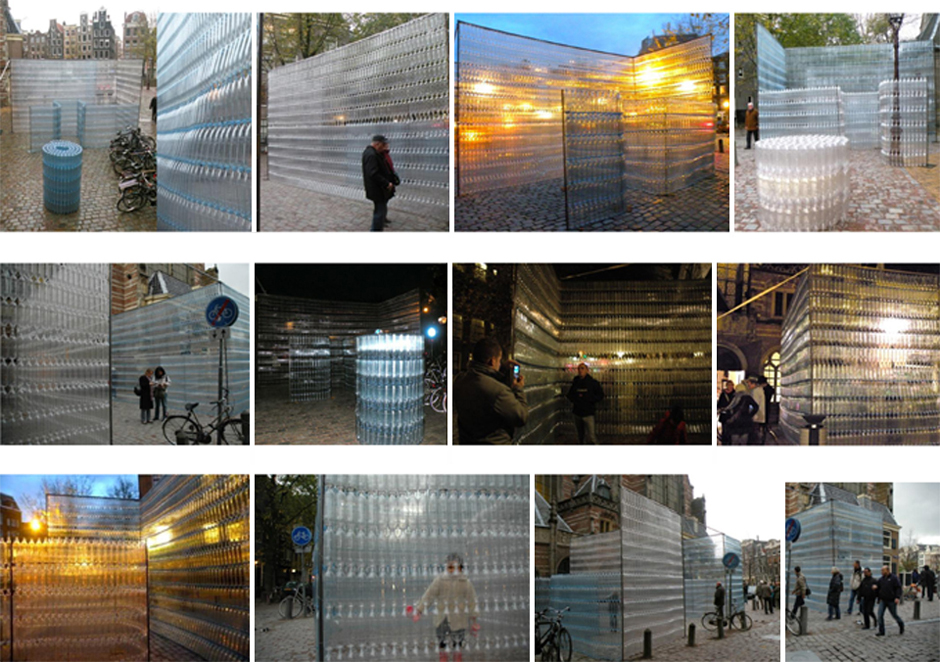 Mansour Ciss Kanakassy
Mansour Ciss Kanakassy

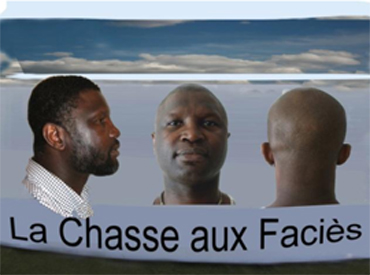
Mansour Ciss Kanakassy, www.villagottfried.de, www.deberlinisation.de, www.mansourciss.de
Senegal-born artist has already been living in two cultures for 14 years during which he fused their forms and values continually in his works, predominantly through installations and multimedia pieces.
Mansour Ciss (Kanakassy) successfully completed his education in the sculpture master class at the national Art Institute of Senegal, at that time still governed by Leopold Senghor, the intellectual, poet, and grand promoter of African art. Kanakassy's art turned political ever since he lived in Germany, where he experienced his second initiation. He lives in Europe and Africa, in two worlds, and many of his projects aim for conveying knowledge and understanding for the "other" culture. He himself says he has something that does not really exist: Two heimaten: Berlin and Dakar.
Kanakassy shows Europeans an unvarnished picture of Africa including its dark side. Thereby, he persistently reclaims European responsibility for today's Africa without forgetting the African people's own role. At the Berlin Conference in 1884/85, the past colonial powers claimed their realms of influence and defined the borders in Africa being still valid today without showing consideration for the ethical and geographical conditions. Many of the apparent inner African conflicts are still rooted in these arbitrary borders between African countries. Mansour calls his projects for the support of African unity in an allusion to this conference Déberlinisation.
 Bill Kouélany
Bill Kouélany
Bill Kouélany was born in 1965 in Brazzaville, Congo Republic, where she lives and works. She is a writer, playwright and multi-media artist.
In her paintings, videos, photographic images and writings, she focuses on current events. She also reflects upon the potential violence inside every human being, leading to an intimate and critical exploration of the relationship between oneself and others.
Peintre et écrivain, Bill Kouélany met très souvent enoeuvre dans ses travaux plastiques, non parfois sanshumour, l'idée ou la traduction violente d'uneimpossibilité. Orchestrant une matière chaotique, sespeintures renvoient à une exploration intime,questionnant le rapport à soi et à l'autre. Ses toilessont incisées, arrachées, rapiécées, elles sontl'endroit de la déchirure, elles s'éprouvent comme despeaux.(...)
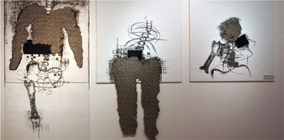
Peuplés des corps anonyme et sans têtes, elles mettenten scène les spectacles d'un théâtre intérieur.Coutures volontairement grossières qui apparaissenttelles des cicatrices, collages qui se mêlent auxtraits simples et aux couleurs brutes, ces formes sontles traces d'un journal de bord existentiel etamoureux, ou s'exacerbent une tension, le désir dejoindre ce qui semble inconciliable. L'artisteentreprend sans relâche et presque amusée, lanarration fluctuante de ces atermoiements.
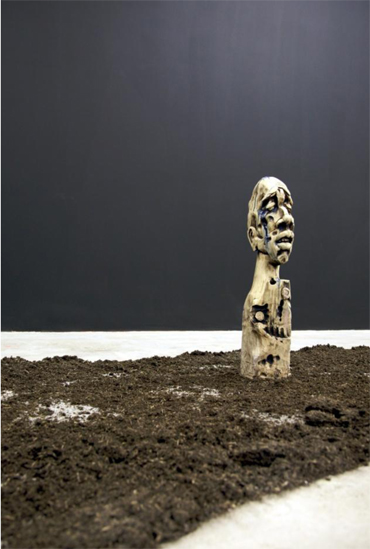 Kevin Dalton-Johnson
Kevin Dalton-Johnson
“...Understanding the dislocation experienced by many Diasporic artists has been central to my work as a professional visual artist. My specialism is ceramics, where I feel at home, making large expressive sculpted busts that act as a visual diary of events that reflect my identity and journey as an African Diasporic man living in the United Kingdom...”
Issues of identity are crucial to understanding today’s society and more specifically to Kevin’s work as a British/Jamaican visual artist born in the United Kingdom. Like many others he experiences a great sense of displacement from living with the affects of limited and fragmented information about their culture and heritage.
The highly emotive and powerful ceramic busts he creates are cathartic and provide a spiritual connection with his African ancestors. They explore issues of identity, displacement and de-colonization of the mind and confront an art world deeply rooted in the politics and ideals of a colonial past and challenge this existing structure through interrogation and representation. They are informed by personal experience and post graduate research at The University of Manchester.

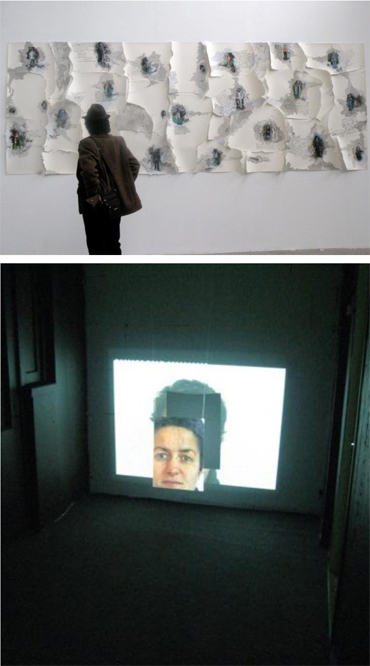 Keiko Sato
Keiko Sato
Keiko Sato; www.keikosato.nl
When I create a work, I first follow the nature, structure, quality and the meaning of materials and objects that I am dealing with. For instance, I believe that the emotional meaning of cigarette butts lies in the fact that they are a remnant of human behavior and desire. Ashes imply that something was burnt. They represent the process of disappearance and death. In the end, I use this emotional meaning and the organic structure of objects to give form to my work.
In nature everything changes and that nothing is stable. When something disappears or is destroyed, something new begins. This discovery gave me an idea of destroying objects and making something new out of them, as if creating a new landscape with pre-existing materials. In my work, the old and the new, and the end and the beginning are present at the same time. In other words, different concepts of time claim the same space. The works show and imply the direct and natural process of material changing. Since 2001 I have been developing a project about my father who served as a kamikaze and survived in the Second World War. That is my first conscious project to find out how my personal experience actualizes as an artwork. The process of the project has been also a trip to search my identity as Japanese. As its consequent the book will be published in 2009
 Frouwkje Smit
Frouwkje Smit

Frouwkje smit; www.frouwkjesmit.nl
"Een kind onder de evenaar, wordt later vaak een bedelaar...."
"A child from south of the equator often later becomes a beggar...."
As a very young child you are already confronted with images and stories about the world around you, like this line from the opening song of ‘Children for Children' from 1980. This was the way she too learned to know the world, through the eyes of others. Until she was 19 and lived in Uganda for nine and a half months, I had to rely on the images and stories they gave me. Since that time in Uganda, she has become strongly aware of the power of those who shape our mental images. Our opinions are substantially influenced by the daily stream of pictures and stories that reach us. These images are often clichés, and serve to reinforce what we already 'know' rather than offering us new points of view. Particularly when it comes to ‘minorities' in our society, she becomes annoyed at the often biased coverage and negative images we are given.
My own mental image of at least a small part of Africa was formed in Uganda, and really that is still the thread that runs through her work. By opening herself up and immersing herself in the story of ‘the other', she tries to look beyond the clichés and learn to know the personal stories behind the stereotypes.
The basis of her work is shaped by encounters, at home in The Netherlands and on her trips. Often these are encounters with people from different cultures. Her curiosity guarantees that she will become fascinated with these people who are rootless and adrift. By making a photo series or a film, she hopes to convey something of her own fascination, admiration and engagement with them. Often they are people who could be her friends; the bond that she builds up with them is an important point of departure for her work. Her work involves more than just ‘portraits' in which she records these encounters. She makes use of elements from her own visual culture or from the culture of her partner in the encounter.
Aref Damee
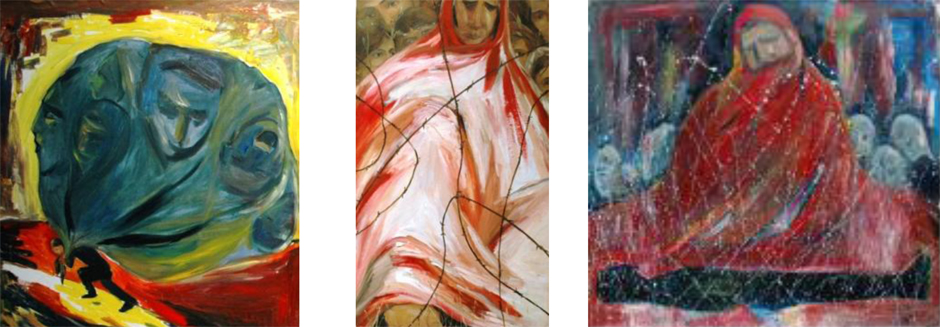
Aref Damee; http://www.geocities.com/arefdamee/
Born in Afghanistan. He is a visual artist, graduated from Art Academy of Sint Petersburg. Since 1996 He lives in the Netherland.
Looking at Aref Damee, a painter in Arnhem, you are struck by his humility, with a trace of nonchalance. In conversation he is sportsmanlike and informal.
Aref Damee, a figurative artist, was trained in St. Petersburg, a renowned Russian academy. He lives and works in Arnhem.
In addition, he has trained as a teacher at the Amsterdam School for the Arts (Hoge School van Kunsten).It is remarkable that a young man such as Aref Damee should feel attracted at a very young age to figurative art, given his culture; it seems as if he feels no need to pay any debt to his origins. At an early age he established an art association in his native Afghanistan. He was invited to train in Russia, with the intention of returning to his family. But sadly they had already fled, his father had been murdered, and he had lost his home. His family fled to the Netherlands, and he followed later. Today they are all well-integrated and feel as if they are Dutch with an Afghan accent.
His method of painting can best be compared with The Hague School, with perfect technique and composition. He is a realistic figurative artist with a somewhat impressionistic streak. Painting is for him more than a record of what the eye sees; revealing passion, his innermost feelings are processed in a subtle way without being immediately obvious. In this way he recollects the old masters who also added personal details to their paintings. But most important of all is his technique. In this point he is radically different from the current trend in which emotion takes the lead.
His technique is a combination of composition and the use of colour; the whole must be in balance. In his view, if this is not correct, the whole creation will collapse like a house of cards.
For an artist with a background in another country, it is - it cannot be denied, and we do not wish to - not always easy to promote his or her work. In this context, he proposes the publication of a catalogue, some of which would be distributed to museums and galleries and some would be offered to interested parties at cost price. Perhaps this could constitute a positive contribution to the debate surrounding multicultural society and integration.
Returning to his paintings, it is obvious that the chosen colours and composition are startling. In all his work there is a subtle tinge of sadness below the surface, not overbearing, and yet strongly present. Sometimes expressing a feeling in a form that at first sight appears everyday, but on closer examination reveals a struggle between living and dwelling between two cultures, and the pain of enforced departure from the land of his birth which is indisputably present.
Alite Thysen
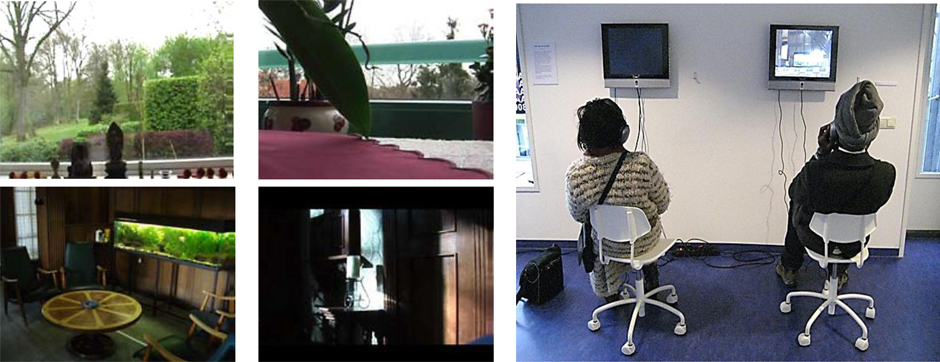
Alite Thijsen, is an artist and law graduate and lives and works in Amsterdam.
She studied at the Akademie voor Kunst en Industrie in Enschede and at the Universities of Amsterdam and Leiden (specializing in law and
administration in developing countries and copyright law).
Her artwork includes drawings, paintings, installations, and videos. Since a long stay in West Africa (1984), which was facilitated by a grant from the BKVB Fund, the different aspects of intercultural dialogue have been at the core of her work.
She is the founder of Stichting ZET Amsterdam (1985), an artist’s initiative that mainly addresses the position of ‘drawing’ in contemporary art.
Stichting ZET promotes and develops international cooperation projects in a broad context with artists from among others China, Canada, Burkina Faso, Senegal, and England.
Andrea Stultiens


 Somehow I am not completely at ease with calling myself a photographer. Instead I describe myself as someone doing things with photographs. I make them, collect them, look at them, think and write about them. Sometimes I make the results of this visible for the rest of the world online, in books or in exhibitions. All of this is aimed at telling relevant stories about the way we deal with the world, while it is also a continuing research into how we represent ourselves and that same world in photographs.
Somehow I am not completely at ease with calling myself a photographer. Instead I describe myself as someone doing things with photographs. I make them, collect them, look at them, think and write about them. Sometimes I make the results of this visible for the rest of the world online, in books or in exhibitions. All of this is aimed at telling relevant stories about the way we deal with the world, while it is also a continuing research into how we represent ourselves and that same world in photographs.
When I realized that my photographs are only one take on the world, that is female, of a certain time and place, with eyes on about 1.6meters high, I started to work with archival material. Images that I found added other dimensions in time and perspective to the photographs I made. At the moment my work often starts with an existing collection of photographs, or at least an existing story that I try to tell by editing and adding to what is already there.
The work I do focuses at the moment on urban areas in transition (in the US and the Netherlands), and on the production of alternative version of the representation of Ugandan history.
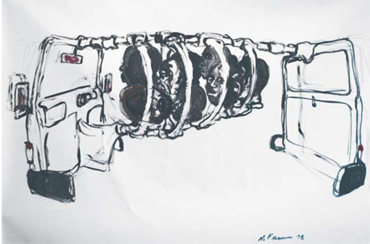 Misheck Masamvu
Misheck Masamvu
‘I feel the need to highlight the changes we have gone through as a nation without a partisan perception. I am optimistic that the subject matter carried through in my work may not be intentionally misread, but it may cause some discomfort in sensitive circles of the society.
I have been true to myself and I do not wish to compromise or exaggerate the extent of difficulties faced by many to this day. I wish to draw attention to intellectual decisions made in the halls of financial institutions that lack the humanistic spirit.
We paid, or rather; we are still paying the price of economical bad policies implemented to sustain a political mayhem. Should we rise from this current mis-step then collectively we should be encouraged to listen to one another carefully and disagree in peace. Neither should we hold on to the expertise we have and exploit the trust of those who rely on us.’
Born in 1980 in Penhalonga, Zimbabwe, Misheck Masamvu studied art with Helen Lieros at Gallery Delta in Harare. He then went on to study at the Kunstacademie in Munich.
Masamvu questions the continent’s current trajectory by dramatically exposing psychosocial and political realities. His bold and furious brush work have been described as ‘expressionistic’ and clearly comment on the political and social ills of Zimbabwe, but ultimately his work is reflective of universal unease.

 Rob Sweere
Rob Sweere
www.robsweere.nl
In the work of Rob Sweere, the elements of nature as light, earth, air, and wind, are transmitted in different ways to the observer. Initially, he presented this point of view in a concrete way as well as symbolically by ritual actions represented in pictures. In his work dating from 1986 until the end of the nineties, the artist himself was central in the pictures. At that moment, not the actions themselves, but rather a balanced report by photographs and videos, were presented as the work of art.
Since 1998, the artist gradually moved towards a presentation of the action itself. Where the observer was initially invited to merely observe the work, from this moment on, he is more and more often invited to take the place that was previously occupied only by the artist himself. In this way, the observer has the opportunity to experience the work in two ways: by participating in the action itself or by observing other people who are involved.
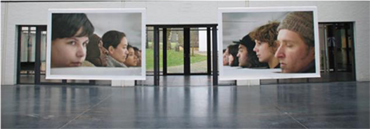 Rob Sweere:" what I like to put first is a true experience of the work of art by the maker as well as the public. Art as current event. It's about true experience of life. Making art is a way to invoke that experience, and - if possible - convey that experience to others. It is comparable with a ritual."The experiences that the artist goes through are those that he wants to transmit to the public. It has to do with a sublimation of feelings beyond the touchable and the nameable. Rob Sweere develops instruments and meticulously staged paths, whereby he tries to translate the experiences of the senses as specifically as possible.
Rob Sweere:" what I like to put first is a true experience of the work of art by the maker as well as the public. Art as current event. It's about true experience of life. Making art is a way to invoke that experience, and - if possible - convey that experience to others. It is comparable with a ritual."The experiences that the artist goes through are those that he wants to transmit to the public. It has to do with a sublimation of feelings beyond the touchable and the nameable. Rob Sweere develops instruments and meticulously staged paths, whereby he tries to translate the experiences of the senses as specifically as possible.
Through these instruments - machines, made by the artist himself - and trough a careful delineation of a track, he sends the observers at a measured pace and with a determined movement into a certain direction, the goal being to steer that experience.
His latest work has an outspoken temporary character, in contrast to his earlier work. After the performance, there is no (physical) image left of what is positioned as a work of art by the artist himself. Hereby, Rob Sweere stresses the experience itself as a medium of art. One could put the object he constructed in the order of instruments, to declare the sound as art. The memory of the experience of the participant is the only thing that keeps the work of art alive afterwards
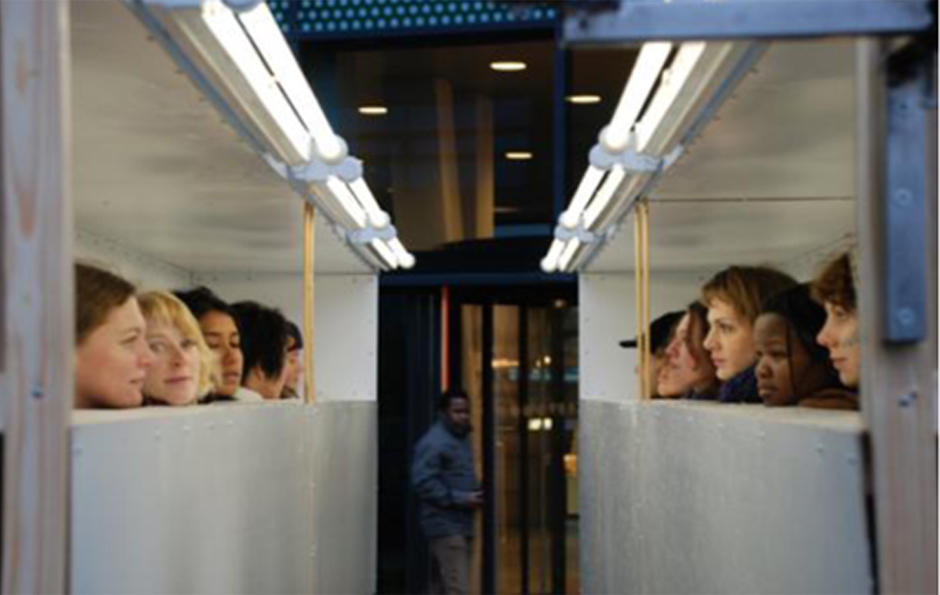
Pelagie Gbaguidi

Pélagie Gbaguidi was born in Dakar in 1965, to Beninese parents. She graduated from the School of Fine Arts in Liège (Belgium) in 1995. For her the artist is a griot. In the poetic sense, "a griot questions the individual as he or she moves through life by absorbing the words of the ancients and modelling them like a ball of fat that he places in the stomach of each passer-by with the ingredients of the day. In the practical sense, he breaks the common place rythm, by inserting subtle incidents, integrating his part of eternity".
In 2004, she was invited by the Center of Contemporary Art at Nantes on an artist in residency program linked to the same year. She discovered there The Black Code by "coincidence".
"Starting from The Black Code by Louis XIV, I would like to share my reaction and my emotions on the encounter of this 'utmost monstrous book of modern times'. After being absorbed by this book for a period of six months, a series of 120 drawings came to see the daylight. Recently this body of work evolved to frescoes in order to contemplate the signs which came to me like visions. Today it is necessary to look upon history through different angles. My artistic engagement leads me to face the history of my origins, the history of black people through time, to better understand the cultural, social and economical issues of the world which I am part of. If nobody chooses his race, one can truly contribute in writing the present history."
From April to June 2007 she was a fellow of AIR (artist-in-residence) Krems. For the first time she presented the complete series "Le Code Noir", including more than 120 works, in the Factory of the Kunsthalle Krems (21.04.-10.06.2007).
For IFAA, thinking about « ART MIGRATION IDENTITY », she proposes this reflexion: Art - My Work in Progress is an utopia to question the world in we live in. « C`est encore et toujours cette façon d`interroger l`homme dans ce qu`il est » . Maybe to try to answer this question : « With what theme do you work? With no theme, is life a theme ? « I reflect on the mistakes of the past, to try to understand what we have fallen into ».
Teresa Maria Diaz Nerio - video-sound piece
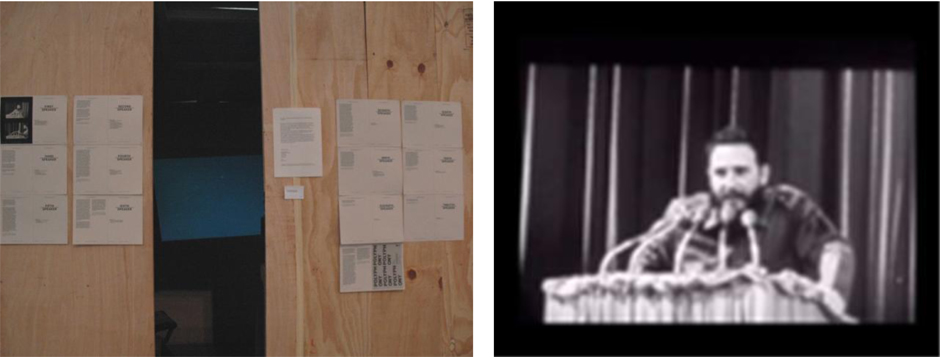
Teresa María Díaz Nerio was born in the Dominican Republic. She is a researcher, a visual and performance artist currently living in Amsterdam.
Teresa graduated in Fine Arts at the Gerrit Rietveld Academie in 2007 and received her Master’s from the Dutch Art Institute in 2009. Her research often focuses on subjects informed by the history of colonial and neocolonial invasions in the Global South, challenging the Eurocentric and US centric notions of who is who and what is what.
Cheikhou Ba

Cheikhou Ba graduated from the Dakar Arts Academy in 2000.In 2001, he represented Senegal in a Francophone Competition in Canada.In 2004, he received substantial exposure through a personal exhibit in the "Off Biennale" where he was rewarded a special distinction by the P. Blachère Foundation, won the Poitou-Charentes reward and was invited to stay at the Josef and Anni Albers Foundation in the United-States. In 2006, he was chosen to be part of "Dak'art 2006" and received the Kultturikauppila reward.
Since then, he has had numerous exhibits and residences worldwide: "Contemporary Senegal" in the Dapper Museum, Sculpture Symposium in China, an exhibit in Finland and finally Switzerland where he is currently living and working.
His current work in Arnhem, Holland is based on the theme posed by the IFAA, "Art Migration and Identity", which provokes him to reflect upon "the human being and the mystery that surrounds him". He ponders questions such as: Who are we as human beings? Are we one single person or many? How many demons live within us? What is exactly Humanity in a person? What is WHITE in a BLACK person, what is BLACK in a WHITE one?
Above all, he wonders how the right hand can hold a rose while the left hand is ready to press on the trigger.
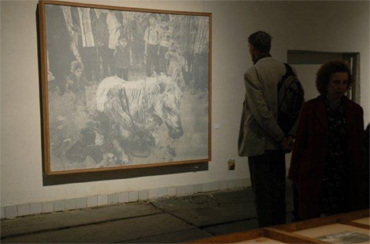 Frank van der Weide
Frank van der Weide
Failed experiment is the overall title of Frank van der Weide’s work, which is basically conceptual. At first his work is merely not characterized by the disgust for the experiments and creations of empirical science, but by the questionable right to the truth and the value freedom claimed through history by scientists. Scientists are continuously busy about knowledge, to be explicit the founded, secured, proven, forced to consent, demonstrable knowledge, which according to them is the only right way of acquiring knowledge. This automatically leads to what they say is science.
The philosopher Carnap did in his work “The logical structure of the world” the almost fantastic looking effort to organize the concepts of all terrains of science. This positivistic way of thinking, which was made into a manifest in the beginning of the twentieth century by the Wiener Kreis movement, is the base of my work. In his work he puts question marks by the positivism in which they think they can get control through numbers and absolute synthesis over nature and live. He also questions the overvaluation of rational and exact thinking.
It is a Platonic structure of thinking, concerning the diverse disciplines and confirms our one sided character of upbringing, shaping and the emerging judgments of value in our society. Plato thought that everything in the cosmos was beautiful. This was expressed in numbers, “Everything is numbers”. These ideas have structured our society till today.
In his work, although it is sometimes referred to as a Don Quichotte like campagne, he tries in an ironical way, sometimes in perspective and then sarcastic,
polemic and rhetorical to put question marks by this numerically, functional and profitable way of thinking. Sometimes his work has a recalcitrant or pamphlet like character, sometimes also esthetic. The terms objectivity and quality are shown from their vulnerable side. In certain circles they call him a dogmatic relativist, which he is proud of.
The diverse appearances of his works are formed by the concept. The form and the materials are adjusted to a set theme. Form follows contents. It is about installations, two and three dimensional works, art in public space and campaigns. He prefers to choose a stage that is related to the contents of his work. He looks for discourse
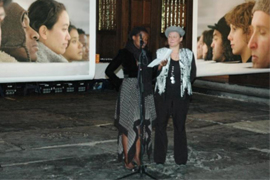 came as a result of a dialogue between artists from: Zimbabwe, Senegal, Benin, Congo Brazzaville with artists from Japan, Dominican Republic, Afghanistan, England and the Netherlands. The purpose of the pilot project which resulted in the Art, Migration & Identity exhibition was to bring about a reflection on presentation and representation of art and to question the role of cultural institutions, curators, art critics and art historians in presenting and representing artists and cultural production from non western countries in western institutions and cultural platforms.
came as a result of a dialogue between artists from: Zimbabwe, Senegal, Benin, Congo Brazzaville with artists from Japan, Dominican Republic, Afghanistan, England and the Netherlands. The purpose of the pilot project which resulted in the Art, Migration & Identity exhibition was to bring about a reflection on presentation and representation of art and to question the role of cultural institutions, curators, art critics and art historians in presenting and representing artists and cultural production from non western countries in western institutions and cultural platforms. Photo by Giovanni Piesco
Photo by Giovanni Piesco
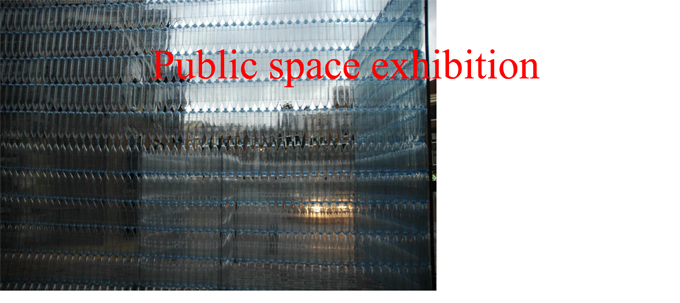


 Mansour Ciss Kanakassy, www.villagottfried.de, www.deberlinisation.de, www.mansourciss.de
Mansour Ciss Kanakassy, www.villagottfried.de, www.deberlinisation.de, www.mansourciss.de
 Bill Kouélany
Bill Kouélany
 Peuplés des corps anonyme et sans têtes, elles mettenten scène les spectacles d'un théâtre intérieur.Coutures volontairement grossières qui apparaissenttelles des cicatrices, collages qui se mêlent auxtraits simples et aux couleurs brutes, ces formes sontles traces d'un journal de bord existentiel etamoureux, ou s'exacerbent une tension, le désir dejoindre ce qui semble inconciliable. L'artisteentreprend sans relâche et presque amusée, lanarration fluctuante de ces atermoiements.
Peuplés des corps anonyme et sans têtes, elles mettenten scène les spectacles d'un théâtre intérieur.Coutures volontairement grossières qui apparaissenttelles des cicatrices, collages qui se mêlent auxtraits simples et aux couleurs brutes, ces formes sontles traces d'un journal de bord existentiel etamoureux, ou s'exacerbent une tension, le désir dejoindre ce qui semble inconciliable. L'artisteentreprend sans relâche et presque amusée, lanarration fluctuante de ces atermoiements.
 Kevin Dalton-Johnson
Kevin Dalton-Johnson

 Keiko Sato
Keiko Sato






 Somehow I am not completely at ease with calling myself a photographer. Instead I describe myself as someone doing things with photographs. I make them, collect them, look at them, think and write about them. Sometimes I make the results of this visible for the rest of the world online, in books or in exhibitions. All of this is aimed at telling relevant stories about the way we deal with the world, while it is also a continuing research into how we represent ourselves and that same world in photographs.
Somehow I am not completely at ease with calling myself a photographer. Instead I describe myself as someone doing things with photographs. I make them, collect them, look at them, think and write about them. Sometimes I make the results of this visible for the rest of the world online, in books or in exhibitions. All of this is aimed at telling relevant stories about the way we deal with the world, while it is also a continuing research into how we represent ourselves and that same world in photographs.
 Misheck Masamvu
Misheck Masamvu

 Rob Sweere
Rob Sweere
 Rob Sweere:" what I like to put first is a true experience of the work of art by the maker as well as the public. Art as current event. It's about true experience of life. Making art is a way to invoke that experience, and - if possible - convey that experience to others. It is comparable with a ritual."The experiences that the artist goes through are those that he wants to transmit to the public. It has to do with a sublimation of feelings beyond the touchable and the nameable. Rob Sweere develops instruments and meticulously staged paths, whereby he tries to translate the experiences of the senses as specifically as possible.
Rob Sweere:" what I like to put first is a true experience of the work of art by the maker as well as the public. Art as current event. It's about true experience of life. Making art is a way to invoke that experience, and - if possible - convey that experience to others. It is comparable with a ritual."The experiences that the artist goes through are those that he wants to transmit to the public. It has to do with a sublimation of feelings beyond the touchable and the nameable. Rob Sweere develops instruments and meticulously staged paths, whereby he tries to translate the experiences of the senses as specifically as possible.




 Frank van der Weide
Frank van der Weide